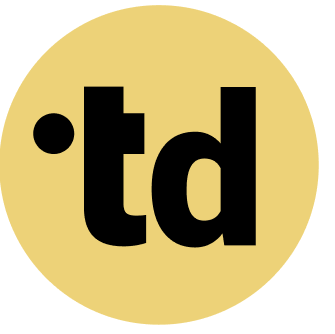Key Takeaways
To effectively scale teams, integrate AI assistants to automate routine tasks, freeing up human talent for strategic, high-value work.
Successful hybrid human-AI teams require redefining roles and responsibilities, creating new positions like 'AI Trainer' and 'Workflow Optimizer' to manage the interface.
Measure the success of AI integration not just by efficiency gains, but with holistic KPIs like decision velocity, employee engagement, and innovation rates.
In today's fast-paced world, team architects face a constant battle against operational overload and change fatigue. Traditional team structures often break under the pressure of rapid scaling, leading to burnout and inefficiency. The solution lies in a new kind of collaboration: the hybrid team (humans and AI agents). By strategically integrating AI assistants, you can automate routine work, unlock data-driven insights, and empower your human talent to focus on high-value strategic initiatives. This article explores how to scale teams with AI assistants, turning daily work back into play.
Practical Framework for Team Architects
As a Team Architect, you can apply these principles to your organization:
- Map Current State: Document existing roles and responsibilities using a tool like teamdecoder.
- Identify Gaps: Where are roles unclear? Where do humans and AI agents overlap?
- Define Clear Boundaries: Specify which tasks are handled by humans vs. AI agents.
- Create Accountability: Assign clear decision rights for each role.
- Iterate and Improve: Continuously refine based on team feedback.
The Scaling Challenge: Why Traditional Team Structures Fail
Many organizations find that traditional team models simply don't scale effectively. In Germany, 70 percent of companies expect AI to boost productivity, anticipating gains of 8 to 16 percent within five years. This expectation highlights a core problem: current structures are hitting a ceiling. Teams are bogged down by repetitive tasks that could be automated. A McKinsey report estimates that up to half of current work hours could be automated by 2030. This isn't about replacing people; it's about augmenting their capabilities. By failing to integrate AI, companies leave significant productivity on the table and risk employee burnout. The path forward requires rethinking how to build a hybrid team (humans and AI agents) from the ground up.
Make Bots and Humans Click: Integrating AI for Team Clarity
Integrating AI assistants is the first step toward building a scalable, hybrid team. In the EU, AI adoption in businesses grew significantly in 2023 to a higher level in 2024, showing a clear trend. The key is to start with clear roles and responsibilities. An AI assistant can handle data analysis, schedule meetings, and draft reports, freeing up human team members for creative problem-solving. For example, a marketing team can use an AI to analyze campaign data, a task that previously took up to ten hours per week. This creates significant time savings for strategic planning. Our Playful Tip: Think of your AI assistant as a new team member. Give it a name and a defined role in your team charter. This simple act of personification can increase adoption significantly. Successful AI integration into team processes depends on this clarity.
Architect Insight: Redefining Roles in a Hybrid Team
For team architects, the rise of AI assistants requires a new approach to organizational development. It's less about static job descriptions and more about dynamic role allocation. In Germany, some small businesses are already using AI to simplify processes. This shift demands a clear framework for human-AI collaboration. You can try teamdecoder for free to map these new responsibilities. Deep Dive: A hybrid team structure often includes roles specifically designed to manage the human-AI interface. Consider these new archetypes:
- AI Trainer: Responsible for teaching the AI specific company processes and context.
- Ethics Guardian: Ensures AI outputs are fair, unbiased, and aligned with company values.
- Workflow Optimizer: Continuously identifies tasks that can be automated to improve efficiency.
- Human-in-the-Loop (HITL) Reviewer: Validates critical AI-generated outputs before they are finalized, a process that can reduce errors significantly.
This structured approach to managing AI and human roles ensures that technology serves the team's ultimate goals.
Measuring Success: KPIs for AI-Augmented Teams
To justify the investment in AI, you must track the right metrics. While companies plan to increase AI investments, many struggle to measure ROI. Go beyond simple efficiency gains and look at the broader impact on team performance and health. Our Playful Tip: Create a 'Time Reinvested' metric. Track hours saved through automation and show how that time is used for innovation or professional devel This can boost team morale significantly.ercent. Key performance indicators for your hybrid team should include:
- Task Automation Rate: The percentage of routine tasks now handled by AI assi
- Decision Velocity: The speed at which teams can make data-informed decisions, which can increase by up to with AI support.upport.
- Employee Engagement Score: A measure of how empowered and satisfied team members feel, often improving by 15 points post-AI integration.
- Innovation Pipeline: The number of new ideas or projects generated with time freed up by AI.
These metrics provide a holistic view of how you are measuring hybrid team performance.
Teams Just Wanna Have Fun: Governance for Sustainable Scaling
As you scale your hybrid teams, clear governance becomes essential for avoiding chaos. This isn't about rigid rules but about creating a framework that allows for agile decision-making. In Germany, many companies see a shortage of AI specialists as a hurdle, highlighting the need for internal upskilling and clear guidelines. A strong governance model addresses data privacy, ethical considerations, and accountability. < A clear framework can accelerate AI adoption by many across an organization.strong> Deep Dive: Your governance plan should be a living document, co-created with your team. It should define how AI tools are selected, tested, and deployed. This ensures that Many people understands the 'rules of the game' and feels secure in their roles, which is a cornerstone of effective training for AI collaboration.
The Result: A Future-Proof Organization
Teams that successfully integrate AI assistants become more resilient, innovative, and scalable. The journey from overload to clarity transforms not just workflows, but the entire organizational culture. Companies with mature AI integration report 30 percent higher customer satisfaction scores. This is the power of freeing up your best people to do their best work. With the right tools and a clear vision for your organizational development, you can build a team that thrives on change. See our pricing to understand how teamdecoder can support your journey. The final step is to take action and begin shaping your team for this exciting future.
Try teamdecoder for free - shape your team and make change feel like play!
More Links
BCG provides insights from a study on AI usage in the German workplace.
The German Federal Ministry of Labour and Social Affairs offers a brochure detailing aspects of working with artificial intelligence.
The Federal Statistical Office of Germany (Destatis) provides a press release with statistics and information related to AI's impact or usage.
Fraunhofer IAO details their "CoCo - AI turbo for work research" project, focusing on human-technology interaction.
The German Society for Personnel Management (DGFP) offers resources and information on the application of AI in Human Resources.
Bitkom presents a publication outlining various perspectives on AI in Germany.
acatech (National Academy of Science and Engineering) discusses the concept of human-centered AI within the professional environment.
The Bertelsmann Foundation provides a publication analyzing the state of AI-related jobs in Germany.
The German Economic Institute (IW Köln) offers an IW Trends publication likely covering economic trends and their relation to AI.
FAQ
How does teamdecoder help build hybrid human-AI teams?
teamdecoder provides a platform to visually map out and define roles, responsibilities, and workflows for both human and AI team members. This clarity is essential for creating a seamless and efficient hybrid team (humans and AI agents) structure.
Is AI integration expensive for a small team?
It doesn't have to be. Many AI tools are offered as scalable subscription services (SaaS), allowing you to pay for what you use. teamdecoder offers a free plan for teams with up to five employees to start scaling roles from day one.
What kind of training is needed for employees to work with AI?
Employees need training on the specific AI tools being used, as well as on new workflows and processes. It's also important to foster skills like critical thinking and data interpretation to effectively collaborate with AI assistants.
How do we ensure our company data is secure when using AI assistants?
Ensure data security by choosing reputable AI vendors with strong security protocols and by establishing clear internal governance policies for data handling. Often review data privacy settings and control what information the AI has access to.





